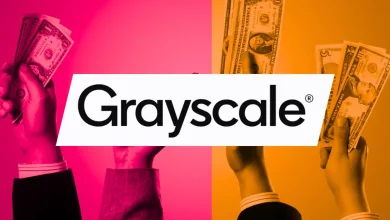
The dynamic world of cryptocurrency is advancing at an unprecedented pace. From its origins as a controversial financial element frequently banned in numerous countries, it has evolved into a significant medium of exchange and payment in various regions. Cryptocurrency’s influence extends beyond transactions; it is revolutionizing how people borrow and spend money. A comprehensive report released by the Office of Financial Research (OFR) on November 26, 2024, delves into the growing involvement of individuals in cryptocurrency and its profound impact on their financial behaviors. The report highlights a compelling trend: an increasing number of people are utilizing their crypto profits to secure larger loans, a pattern that could pose potential risks in the future.
Understanding the Surge in Crypto Borrowing
According to the OFR report, which leverages data from the IRS, household exposure to cryptocurrency has seen a significant surge, tripling between 2020 and 2021. Interestingly, this trend is not confined to affluent individuals. Low-income areas witnessing high crypto activity have undergone substantial transformations. For instance, mortgage balances for families in these areas have skyrocketed by over 150%, and there has been a remarkable increase in the number of households taking on mortgages. From 2020 to 2024, mortgages in these regions increased by a staggering 250%. It is evident that cryptocurrency is increasingly motivating individuals to borrow more.
The Ascendancy of Borrowing: Mortgages and Loans
The substantial returns from cryptocurrency investments, exemplified by the 300% increase in 2020, have emboldened individuals to undertake larger debts. Many are channeling their crypto profits into down payments for homes, resulting in a notable rise in mortgage borrowing. The OFR report further indicates an uptick in auto loans; however, delinquency rates have not yet reached alarming levels. Nonetheless, a cautionary note persists. Some households are overextending themselves financially, straining their debt-to-income ratios. While the crypto market is currently flourishing, the uncertainty looms—what happens if the market experiences a downturn?
Demographics of Crypto-Driven Borrowing
Although young individuals and residents of tech-centric regions have traditionally been prominent crypto investors, it is, in fact, low-income households in areas with high crypto activity that are borrowing the most. These families are leveraging their crypto wealth to make significant purchases, subsequently assuming more debt. The volatility of cryptocurrency is a double-edged sword—it can surge dramatically, but it can also plummet just as abruptly. The inherent risk is that if the market declines, those who have borrowed extensively may find themselves struggling to meet their financial obligations.
Assessing the Risks
As of early 2024, delinquency rates in areas characterized by high cryptocurrency activity remain relatively low, but this could change. The escalating debt levels in low-income communities could pose a significant problem if cryptocurrency prices begin to decline. Households that have taken on substantial loans to purchase homes or vehicles using crypto profits might encounter difficulties in repaying them. If such scenarios materialize, they could have far-reaching implications for the financial stability of these households.
Opportunities and Risks in the Crypto Landscape
The OFR report underscores the dual nature of cryptocurrency as both a wealth-building tool and a source of risk. While leveraging crypto gains to make significant investments may appear astute during bullish market phases, it leaves households vulnerable to market downturns. The rising debt levels, particularly in low-income areas, heighten the risk of financial instability. This evolving landscape demands careful observation as the cryptocurrency market continues to fluctuate and transform.






